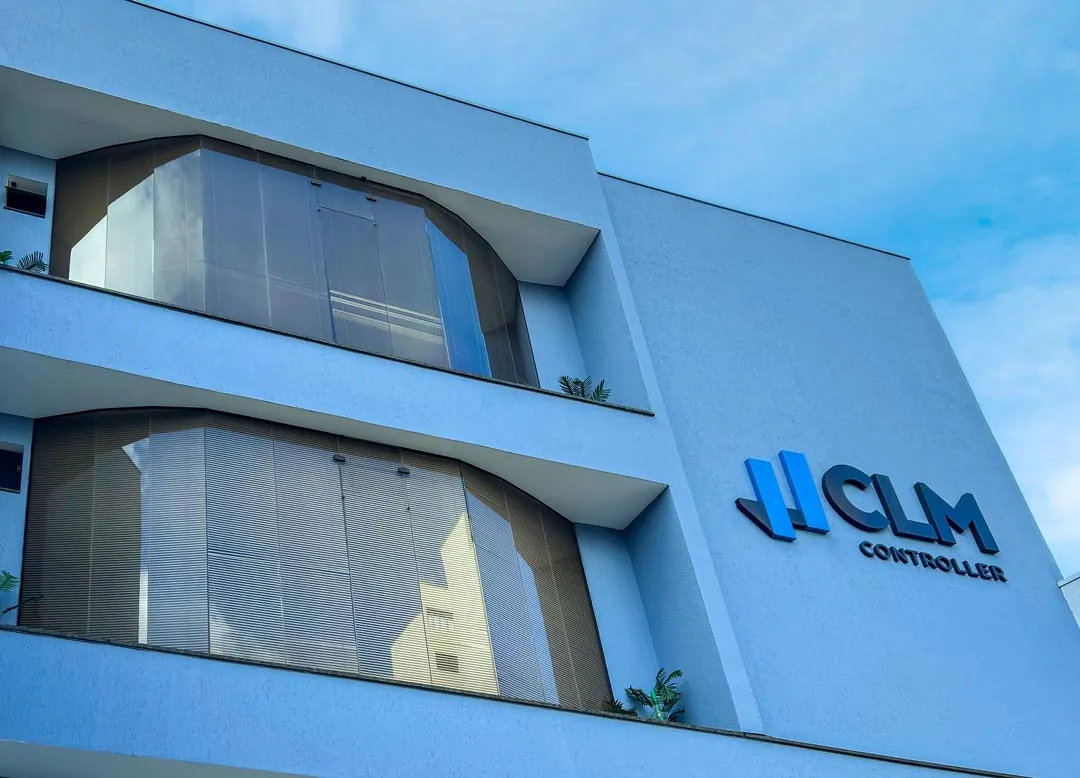If you are considering joining Simples Nacional for your company, it is essential to understand the eligibility criteria, how the INSS and the associated social security benefits.
In this article, we're going to detail everything you need to know to ensure that your company complies with the legislation and makes the most of the advantages of this simplified tax regime.
Listen to our podcast where Rodrigo and Ana have an uncomplicated chat about How INSS works for Simples Nacional companiesbased on the content of the CLM Controller. They explain:
What is the INSS and what is it for?
O National Institute of Social Security (INSS) is the body responsible for Social Security in Brazil. It administers contributions and benefits such as pensions, sickness and maternity benefits, among others. In simple terms, the INSS works like a social insurance: workers and companies contribute monthly, and these contributions finance the benefits paid to insured people.
For entrepreneurs, understanding the INSS is important because even companies that opt for the Simples Nacional have social security obligations to fulfill. These obligations guarantee social protection for the company's employees and partners.
Contributing to the INSS ensures that, in the future, you and your employees will be able to access retirement and other benefits. Therefore, even for entrepreneurs of micro and small companies, it is essential to know how INSS works within the Simples Nacional regime and keep contributions up to date.
For more information on INSS in Simples Nacional, check out the following video:
How does INSS work for Simples Nacional companies?
Companies included in the Simples Nacional pay their taxes in a unified manner through the DAS (Simples Nacional Collection Document). This simplified regime includes various federal, state and municipal taxes in a single monthly form. In many activities, the INSS Patronal - the social security contribution due by the company - is included in this unified form (identified as Employer's Social Security Contribution - CPP).
However, there are important exceptions: some companies in Simples must pay the employer's INSS contribution separatelyas explained below. The exact way in which INSS obligations are fulfilled will depend on whether or not the company has registered employees and in which Simples Nacional annex your activity fits in.
Read also: Interest Simples Nacional, how to calculate overdue DAS
Simples Nacional companies without employees
For companies opting for Simples Nacional have no employeesThe burden of INSS is much reduced. In these cases, the company does not have to pay any employer's contribution on payroll, since there is no payroll. This does not mean, however, that the INSS can be completely ignored. The partners who work in the company should consider whether they should contribute to the INSS as individual taxpayers, through the pro-labore (remuneration of managing partners).
- Partners' pro bono: Although there is no legal requirement for a minimum pro-labore in Simples, the Receita Federal recommends that at least the managing partner earns a pro-labore (usually equivalent to at least one minimum wage). INSS is levied on the pro-labore amount, just like on an employee's salary. A rate of the INSS on the pro-labore of the managing partner is 11%The amount deducted from the member is limited to the INSS ceiling.
For example, if the partner earns a pro-labour of R$ 2,000.00, they will be discounted R$ 220.00 (corresponding to 11%) to the INSS. This amount must be paid monthly using a specific form (GPS or INSS DARF).
Raquel Torres
- Member contribution optional: If the partners don't make a pro-labore withdrawal (many entrepreneurs choose to receive only profit distributions, which don't have INSS), the company no employees will have no INSS payments to make directly. However, it's important to note that only the partner who contributes will be entitled to an INSS pension in the future. Therefore, in order to have social security protection, it is advisable to take a salary and pay the contribution, even if the company has no employees.
In a nutshell: Simples company without employees does not pay employer's INSS monthly, but partners should consider contributing via a pro-labore so as not to be left uncovered. The amount of this partner contribution is 11% of the pro-labore (up to the ceiling), and the company, depending on the case, may or may not have an employer's charge on it (we'll see the difference in Annex IV below).
Simples Nacional companies with employees
If your company has registered employeestwo INSS obligations come into play: the employee's part (which is retained of the salary) and the company's share (also called INSS patronal or employer's contribution). In the case of Simples Nacional companies, the rules for these contributions are similar to those of any company, with one essential difference regarding how the employer's INSS is paid:
- INSS withheld from the employee: every month, when running the payroll, the company deducts from the each employee's salary his individual social security contribution. Since the pension reform, this employee contribution has been calculated in the following ways progressiveby salary bracket. In 2025, for example, an employee with a salary of up to R$1,518.00 contributes 7.5% of the salary; higher salaries contribute in higher bands of 9%, 12% and 14%, as shown in the table below. This figure is retained of the employee's gross salary and the company must pay it to the INSS (up to the monthly ceiling of R$ 8,157.41 in 2025).
All companies, including Simples, must withhold and pass on this amount regularlyvia systems such as eSocial or SEFIP.
Raquel Torres
- Company's INSS: corresponds, as a rule, to 20% on payroll (total salaries and wages for the month). This is the employer's social security contribution. The great advantage of Simples Nacional is that, for the majority of opting companies, this employer's rate is already included in the taxes paid in the DAS. In other words, the company pays the employer's contribution in a unified manner, along with other taxes, and does not need to make a separate payment of 20% on each payroll. However, for some categories of services in Simples, this contribution is not included in the DAS and must be paid separately. We'll see which companies they are below.
Simples Nacional Annexes and the INSS Patronal (CPP)
Simples Nacional classifies business activities into different attachments (from I to V), each with a table of rates for calculating the unified tax. In four of these annexes (I, II, III and V)the DAS rate already includes the CPP (Employer's Social Security Contribution). This means that if your company is in these attachments, the employer's INSS on employees' salaries is already being paid through the DAS - there is no separate collection of 20%. In practice, the company continues to pay the employer's contribution, but it is included in the Simples percentages.
On the other hand, in Annex IV of Simples Nacional, the CPP is not included in the DAS. Companies listed in Annex IV must pay the employer's INSS of 20% separately on the payrollsuch as companies in tax regimes other than Simples. The legislation (LC 123/2006) expressly states that for activities in Annex IV,
"the Simples Nacional rate does not include the employer's social security contribution, which must be paid in accordance with the legislation for other taxpayers".
Raquel Torres
In a nutshell: Simples companies in Annexes I, II, III or V - which include commerce, industry and various services - do not have to pay 20% outside the DASbecause they already pay CPP under Simples. Annex IV companies - which encompass some specific service sectors - must pay the CPP separatelyby means of a GPS/DARF form every month.
Let's break down which activities fall into each case:
- Examples - Annex I, II, III, V: commerce in general, factories and industries, gyms, medical clinics, IT or consulting companies (which fall under the scope of the R Factor in Annexes III/V), etc. In these cases, the Simples (DAS) form already includes the employer's INSS. The company only has to worry about paying the INSS withheld from employees and partners (11% pro-labore) each month, because the employees' employer's share is already included in the DAS.
- Examples - Annex IV: construction companies, engineering works, surveillance/security services, cleaning or conservationand law firms, among others. These activities are defined in §5º-C of art. 18 of LC 123/2006, are obligatorily taxed in Annex IV. In this case, the DAS for Simples no includes the 20% contribution, and the company must calculate and pay 20% on salaries and pro-labore separately, via INSS DARF.
To make it clearer, here are a few examples of CNAEs included in Annex IV of Simples Nacional (activities that pay INSS separately):
| CNAE (Code) | Activity (Annex IV of Simples) |
| 4120-4/00 | Building construction - construction, engineering works, subcontracting. |
| 8011-1/01 | Surveillance and private security activities - property surveillance and security services. |
| 8121-4/00 | Cleaning and maintenance - cleaning companies in buildings, homes or public streets. |
| 8130-3/00 | Landscaping and decoration - gardening, landscaping and interior decoration services. |
| 6911-7/01 | Legal services - law firms and legal activities in general. |
Note: The above list is not exhaustive; other activities listed in the law may fall under Annex IV. If in doubt, consult an accountant or the law to check the annex for your activity.
Important: If your company is in Annex IV, when calculating payroll charges you should add 20% employer's INSS on salaries and wages. In addition, the RAT (Occupational Accident Risk(usually 1% to 3% depending on the activity) and, if any, contributions to third parties (Sistema S) - social security obligations that other Simples companies are generally exempt from. On the other hand, companies in Annex IV usually have slightly lower Simples rates compared to other annexes, since the CPP is left out of the DAS.
INSS rates and contribution bands (updated 2025)
As mentioned, the INSS deduction on the remuneration of employees is calculated by salary bands, so that progressive. This means that there is no single fixed rate - the worker's salary is divided into parts, and each part is taxed at a percentage. The table below shows the contribution rates for employees in 2025:
| Salary range (2025) | INSS rate |
| up to R$ 1,518.00 | 7.5% |
| from R$ 1,518.01 to R$ 2,793.88 | 9% |
| from R$ 2,793.89 to R$ 4,190.83 | 12% |
| from R$ 4,190.84 to R$ 8,157.41 (ceiling) | 14% |
Table: monthly contribution salary bands and INSS rates in 2025. The rate is applied progressively (only to the part of the salary in each band).
To illustrate: an employee with a salary of R$1,500.00 is entirely in the first lane (up to R$1.518) and will have 7.5% deducted, i.e. R$112.50 of INSS. Now an employee with a salary of R$3,000.00 contributes in multiple bands: 7.5% on the first R$1,518, then 9% on the part of the salary between R$1,518.01 and R$2,793.88, and 12% on the part exceeding R$2,793.89 - resulting in approximately R$ 253,40 from the total (proportional calculation). In all cases, it is the company's responsibility to withhold these amounts from the employee's paycheck and pass them on to the INSS on time.
Social security ceiling: Note that even if the employee's salary is high, the INSS contribution is capped. In 2025, the contribution salary is limited to R$ 8,157.41. No further INSS deductions are levied on what exceeds this amount. The maximum deduction for an employee is 14% of the ceiling (around R$ 1,142.04 per month). For a partner who receives a salaryThe reasoning is similar: he will contribute 11% up to the ceiling, which is a maximum of R$ 897.32 per month discount (11% of 8,157.41).
Differences: employer's INSS, withheld INSS and partner's contribution

Doubts often arise about the different types of INSS contributions within a company. Let's clarify them in a simple way:
INSS Patronal (company's share)
It's contribution of the company as employercorresponding to 20% on employee remuneration and also the partners with pro-labore. This charge is calculated on the total of the salaries paid on the payroll (plus the directors' salaries, if any).
In Simples Nacional, this employer's contribution (also called CPP) is included in the DAS for almost all activities, except Annex IV companies. Companies in Annex IV pay this contribution separately via the INSS form, while companies in the other annexes pay it as part of Simples.
The employer's INSS is essential to fund Social Security and guarantee the future benefits of workers. Remember: even Simples pay employer's INSSThe only thing that changes is how they pay (via a unified DAS or a separate form).
Withheld INSS (employee discount)
It's insured worker's contributionThis is deducted from the employee's salary. It doesn't come out of the company's pocket, but the employee's - the company just withholds it and passes it on. It corresponds to the progressive rates in the table (7.5% to 14%) on each employee's salary, limited to the monthly ceiling. On the employee's payslip, it is that INSS deduction that reduces the net salary.
Simples companies follow the same bands and rules as any other company: all employees with a formal contract must have INSS deducted within these percentages. The company, as the person responsible for taxes, collects these amounts and sends them to the INSS.
Partner contribution (pro-labore)
When the managing partner withdraws a pro-labore, he is treated as a mandatory individual contributor to the social security system. Thus, there is also an INSS deduction on the pro-laboreusually at a flat rate of 11% on the amount paid to the member.
That's the part the partnerwhich is withheld from the amount he receives (just like an employee's deduction). In addition the company is also responsible for the employer's INSS on the pro-laboreIn other words, in Annexes I-III and V, the employer's share of the pro-labore is already included in the DAS; in Annex IV, the company must pay the 20% for the pro-labore separately, together with the 20% for the other salaries.
In other words, the pro-labore is discounted by 11% for the partner and can generate a charge of 20% for the company (if it is not exempt via Simples).
A practical recap
Imagine a partner who receives R$ 1,500.00 in profit and an employee with a salary of R$ 1,500.00. In this scenario, the following will be deducted R$ 112.50 of the employee's salary (7.5%) and R$ 165,00 of the partner's pro-labour (11%).
The company, in turn, if it is an Annex IV company, will pay R$ 300,00 employer's INSS for the employee (20% of 1,500) plus R$ 300.00 for the partner's pro-labour (20% of 1,500). If it's from another annex, the R$ 600 employer's fee is already included in the unified DAS and doesn't require an extra payment - the company would just pay the monthly DAS and collect the R$ 112.50 and R$ 165.00 deducted via the INSS form.
Notice how in Annex IV the social security burden is highlighted separately, while in the other annexes it is diluted in the unified system.
Frequently Asked Questions (FAQ)
Does a Simples Nacional company pay the employer's INSS?
Yes. The employer's contribution (20% on the payroll) exists for all companies, including those opting for Simples Nacional. The difference is as this employer's INSS is paid. In the common Simples annexes (I, II, III, V), the employer's INSS is included in the DAS and is not paid separately. As for the Annex IVthe company pays the employer's INSS apartvia the INSS form (GPS/DARF) every month. In short, the Simples paid yes, INSS patronal, but if you are not in Annex IV, this payment is already included in the Simples taxes. If you are in Annex IV (e.g. construction, surveillance, cleaning, law), you will need to pay 20% on salaries and pro-labore separately.
How does INSS apply to partners' pro bono?
O pro-labore is the remuneration that the managing partner receives for working in the company. The following taxes are levied on the pro-labore amount INSS exactly as if it were a salary. The rate applied is 11% on the pro-labore valueThis amount is limited to the INSS ceiling. This amount is deducted from the partner and paid by the company in a separate form (GPS) every month. For example, in 2025, if the partner earns R$ 1,518.00 (equivalent to the minimum wage), R$ 167.00 will be deducted from INSS; if he earns R$ 5,000.00, R$ 550.00 will be deducted; and if he earns R$ 10,000.00, he will only contribute up to the ceiling (around R$ 897.00).
It is important to note that, in addition to the 11% withheld from the partner, the the company also has the employer's share of the pro-labore. In the case of Annex IV companies, there are obligation collecting 20% on the gross value of the pro-labore via the INSS form. For companies in the other annexes, this employer's share of pro-labore is already included in the DAS (i.e. you don't need to issue a separate form for the partner's 20%). Regular payment of INSS on pro-labore guarantees that partners will be entitled to retirement and other INSS benefits in the future.
Is it compulsory for the partner to draw a pro-labore in Simples Nacional?
In theory, it is not explicitly required by lawbut in practice it is highly recommended and expected by the tax authorities. Social security legislation considers a partner who works for the company as a mandatory contributor (individual contributor) to the INSS. This means that if the company operates and the partner is active in it, it is presumed that he should receive remuneration (pro-labore) for his work and contribute to Social Security. A Internal Revenue ServiceIt can even question companies without any withdrawal of profits, especially if there are distributed profits.
So, although there is no automatic fine for not having a pro-labore, the right thing is for the managing partner to have a monthly pro-laboreEven if it's the minimum amount (one national minimum wage). In this way, in addition to complying with the rules, the partner guarantees social security protection (time counted towards retirement, right to sick pay, etc.). Remember: on the pro-labore, the company deducts 11% of INSS from the partner and, if it is Annex IV, it collects a further 20% from the employer. If it's another annex, only the partner's 11% (the employer's part is already in the DAS).
Does a Simples company with no employees have to pay INSS?
If the company no employees, no payroll - then there is no monthly employer's INSS to pay. There are no employee retentions to be made either. However does not fully exempt the company and its partners from the INSS. As we have seen, it is advisable that at least the managing partner make a profit to contribute to the INSS as an individual taxpayer. In this case, the company must pay the 11% corresponding to the INSS on this pro-labore every month (via GPS), and possibly the employer's 20% if it is an Annex IV activity. If the partners don't contribute and there are no employees, the company doesn't pay any INSS each month. But beware: not contributing means not counting time for retirement and not having social security coverage in the event of illness or accident. So even if you don't have any employees, check with your accountant about the possibility of paying a pro-labore (even if it's minimal) to keep yourself insured by the INSS.
Is it possible to reduce the INSS burden in Simples Nacional?
The INSS burden - especially the employer's share of 20% - often weighs heavily on the budget of small businesses. There is no total exemption possible within the lawbut there are strategies to optimize or reduce impact:
- Lean payroll: Partners can set a pro-labore amount not too loudkeeping it close to the bare minimum, and supplementing their income through distribution of profits of the company. Profits distributed to the partner are not subject to INSS or income tax, unlike pro-labore. Attention: The pro-labore should be consistent with the partner's performance - don't go overboard by putting in a derisory amount if the company has a high turnover, as this could attract the attention of the tax authorities. But using profit as a means of remuneration in addition to a basic pro-labour is a common and legal practice. reducing the social security tax burden.
- R factor and choice of attachment: If you are a service company, find out about the Simples Nacional R Factor. It's a calculation that relates payroll to turnover. Depending on the result, certain activities may be taxed under Annex III (which includes CPP in the DAS) instead of Annex V, reducing the total tax burden. This is a way of paying less tax in the DAS, possibly including less employer's INSS. Although it doesn't change the percentage of INSS itself, it can reduce the percentage weight of taxes of the company as a whole. Consult an accountant to see if your activity fits into this optimization.
- Payroll exemption (specific cases): Some sectors of the economy have "payroll tax exemption" measures in place at certain times, and can contribute on gross revenue instead of 20% on wages (CPRB). However, for micro and small Simples companies this generally does not apply, unless a special law is in force. Stay tuned for news and government programs that could benefit your sector.
- Planning and efficiency: Another way to reduce the burden of the INSS is to avoid unnecessary payroll costsThe most important thing is to: plan hiring according to demand, evaluate outsourcing of middle activities (taking care not to incur labor fraud) and keep up to date to avoid fines. Non-payment of INSS generates charges and fines, which make it much more expensive in the long run. So paying correctly, even if it seems costly, is cheaper than having to pay fines and interest later.
In short, there is no "way" to eliminate the social security contribution - It is compulsory by law and very important for guaranteeing social protection. But with good tax and labor planning, Simples entrepreneurs can better manage these costs and avoid paying more than necessary. Always consult an accounting professional to advise you on legal tax-saving strategies.
By keeping up to date with the INSS and Simples Nacional rules, your company will remain regular and you, the entrepreneur, will be able to enjoy social security benefits in the future. Remember: complying with these obligations is not just a legal duty, but an investment in security and peace of mind for you, your employees and the business as a whole. In case of specific doubts, look for official sources (Internal Revenue ServiceINSS) or the support of a trusted accountant - This ensures that you are following all the rules updated until 2025 and taking advantage of the rights and benefits offered to Brazilian micro and small entrepreneurs.
How CLM Controller can help
A CLM Controller Accounting offers complete support for companies wishing to join Simples Nacional. Our team of experts is ready to help from registration to the ongoing management of taxes and social security obligations.
Are you thinking of joining Simples Nacional? Contact CLM Controller and find out how we can help your company grow safely and efficiently!










